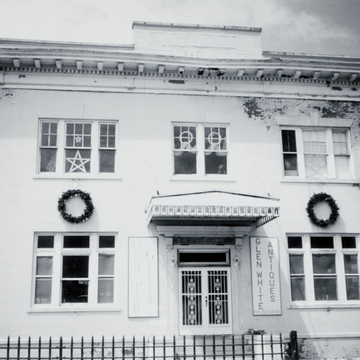E. E. White, who named his town after himself, opened the first mine here in 1909. Glen White soon became one of Raleigh County's largest company towns, and many of its buildings remain. A number of L-shaped one-story miners' cottages and gable-ended two-story houses, the latter occupied by miners of a slightly higher echelon than those who lived in the former (or at least by those with larger families), stand south of WV 54, which now bypasses the town. According to notices in Manufacturers Record in 1921 and 1922, R. F. Roth, chief engineer, planned some of the houses, which the company constructed. Others were prefabricated by the Minter Homes Corporation of Huntington. When the mines at Glen White closed in 1945, the company sold the houses.
In addition to the miners' houses, the company office and superintendent's house also survive. The E. E. White Coal Company Office ( RA13.1), a handsome, two-story classical brick building, painted white, resembles a small schoolhouse of its time but now serves as an antique shop. The company's name is cast in a cement panel over the central door, while the single word Office is in a similar panel in the parapet above the cornice. The Superintendent's House, an imposing residence appropriately located on a hill overlooking the town, was obviously the home of the highest resident official.














